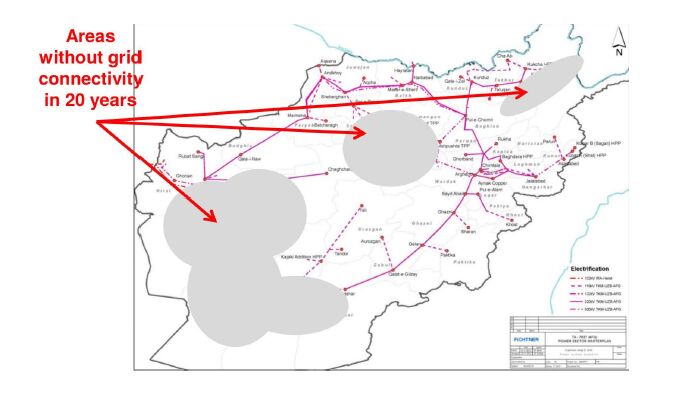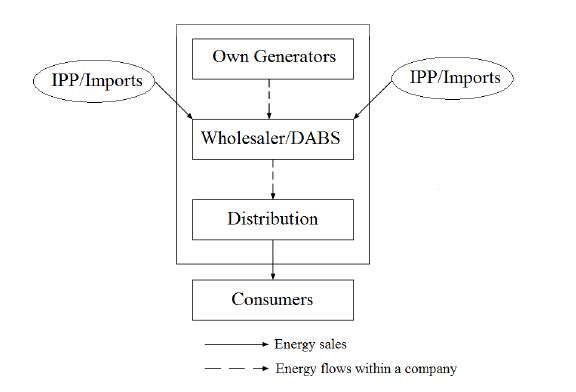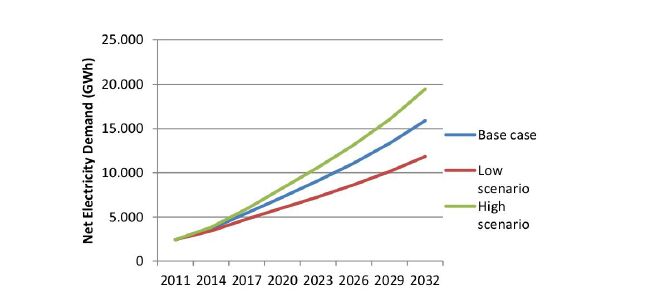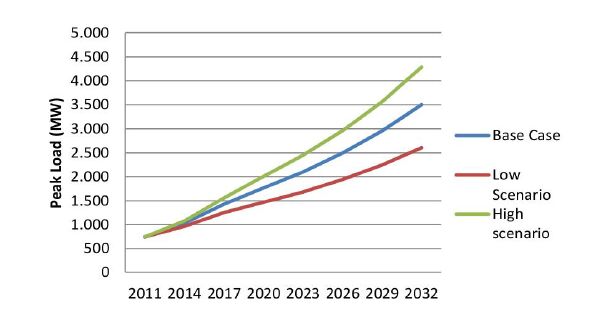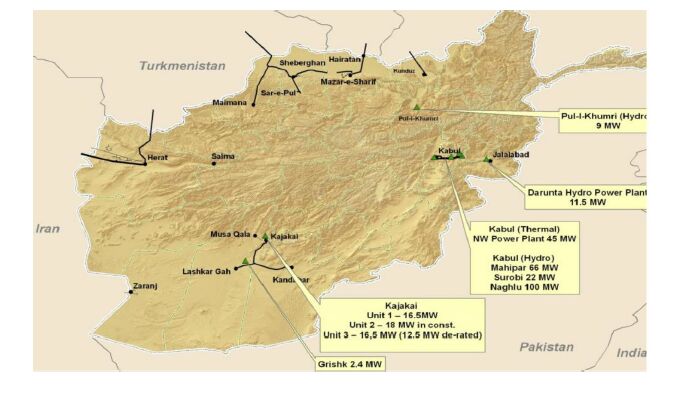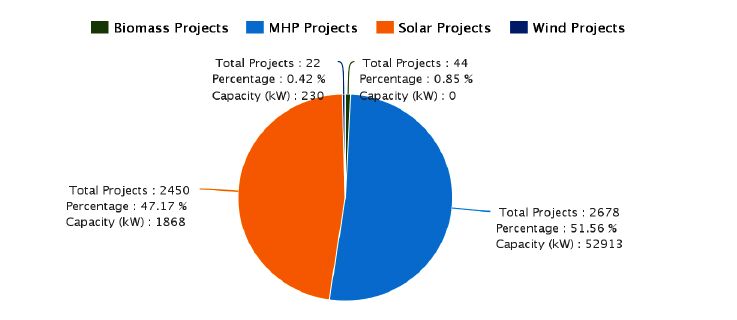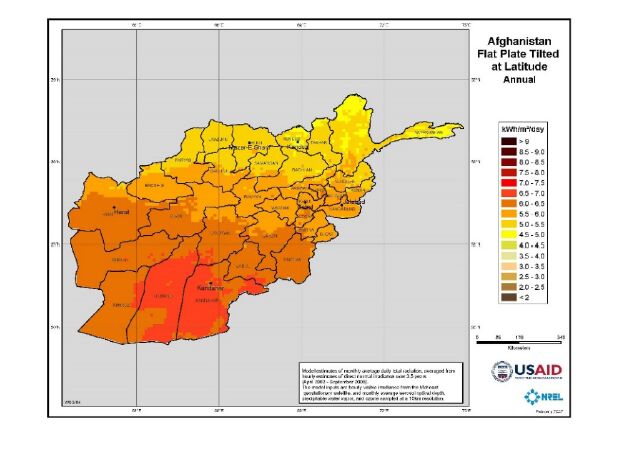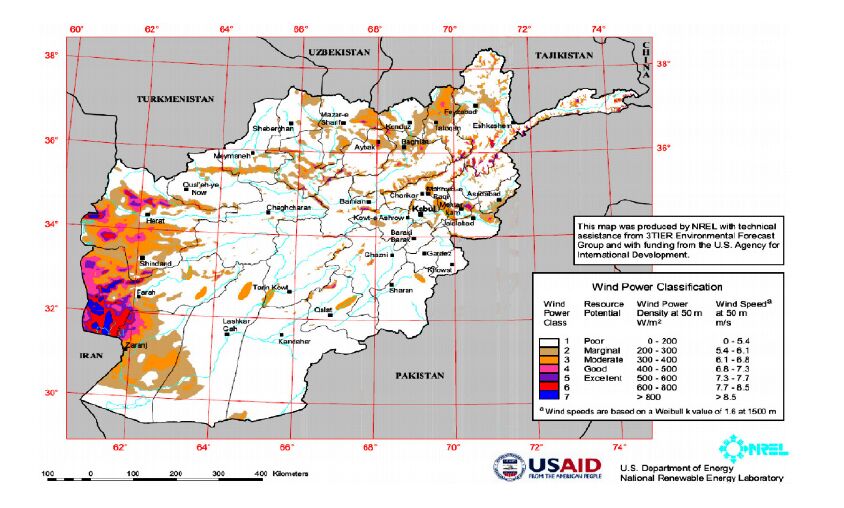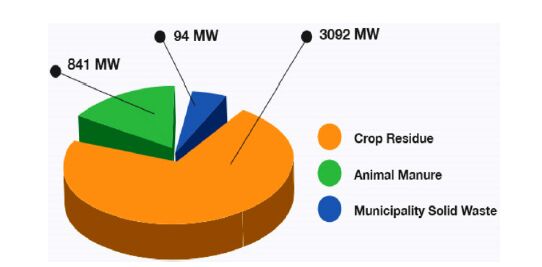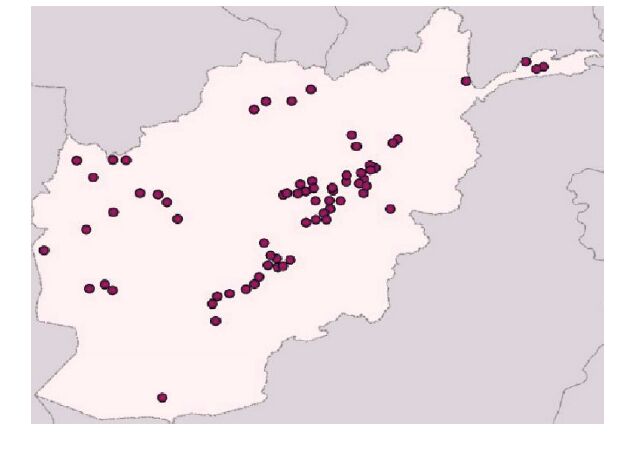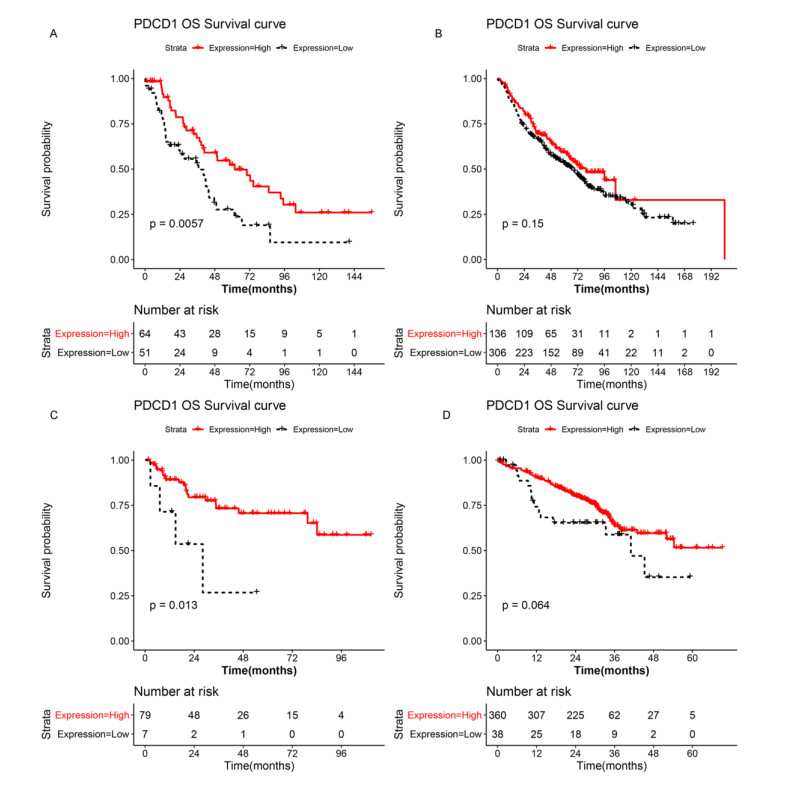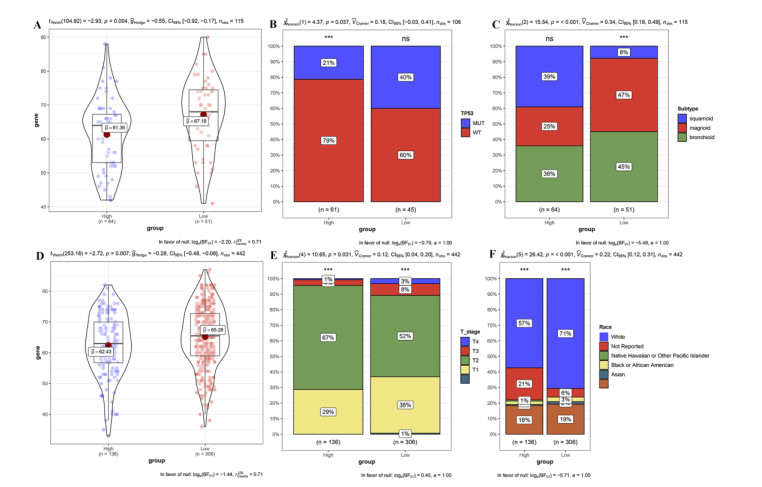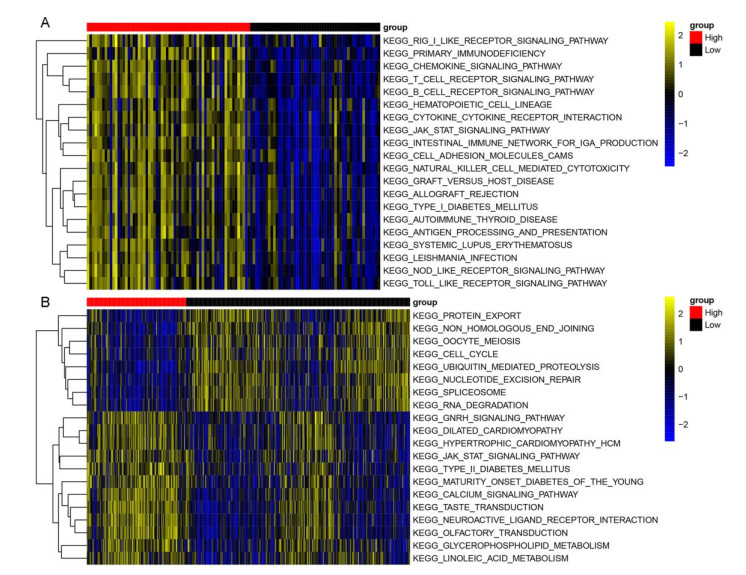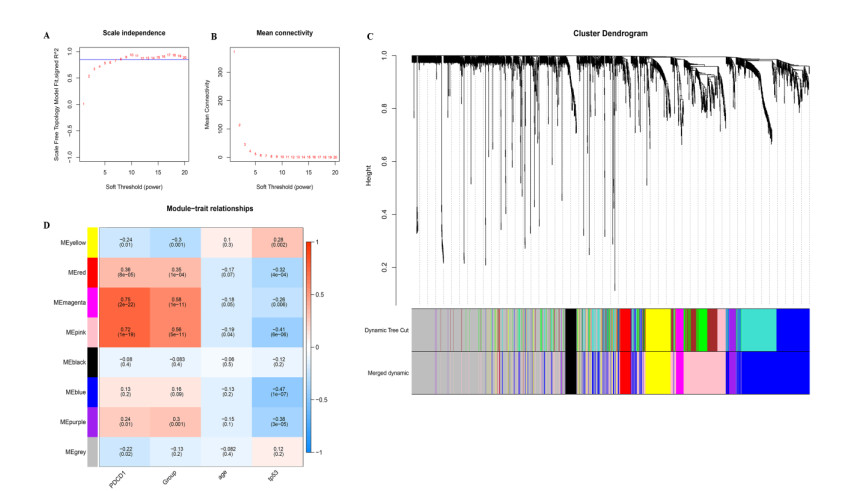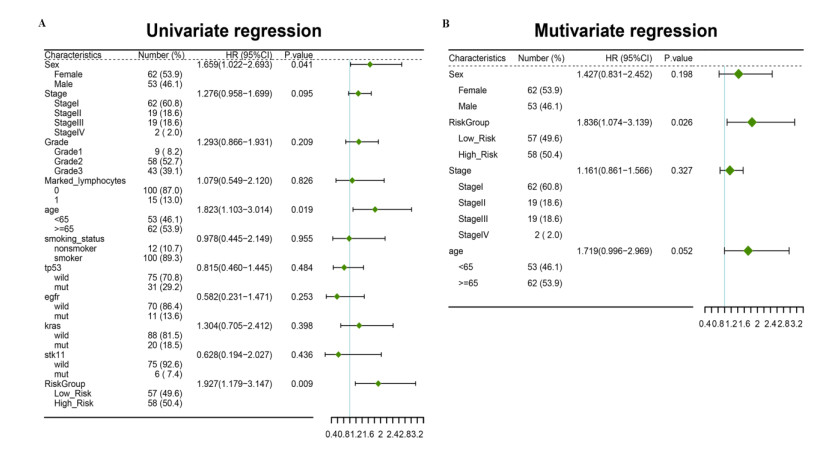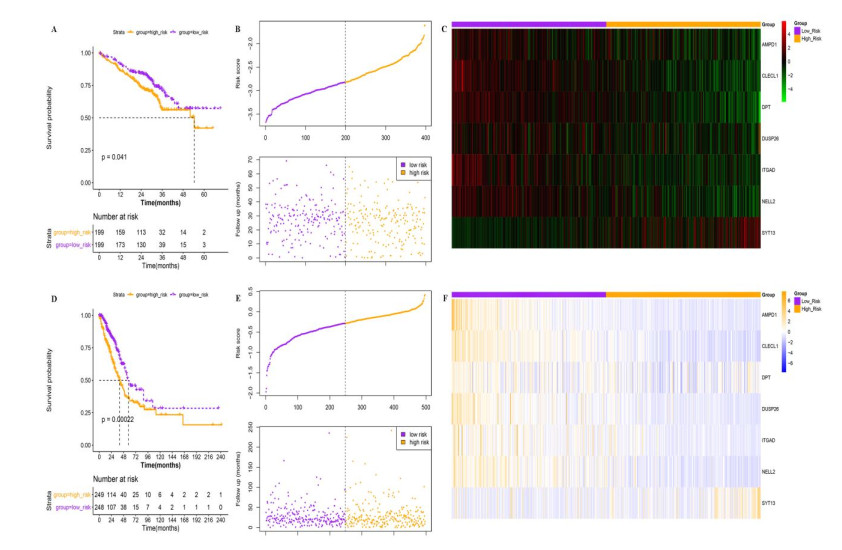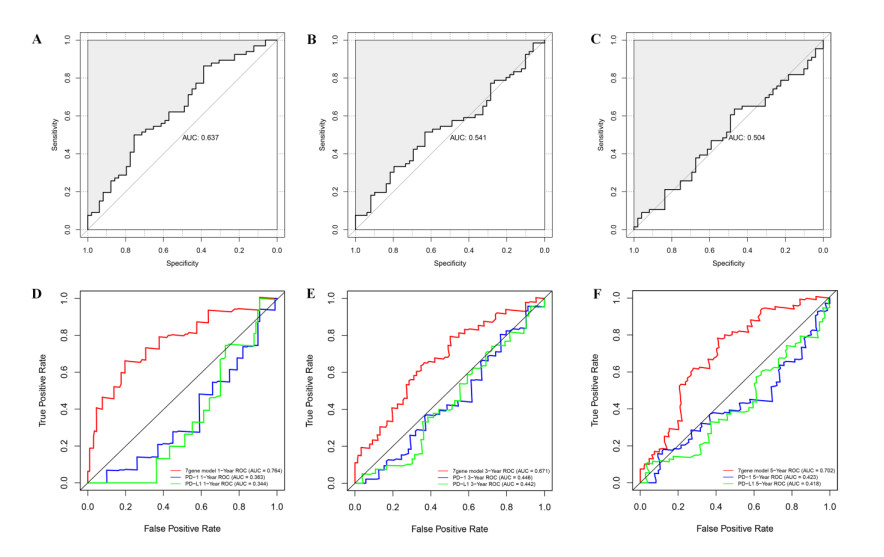1. Introduction
Afghanistan is a mountainous and landlocked country which is located in South-Central Asia, north and west of Pakistan, east of Iran. It is located between latitude 29°35' and 38°40' degrees north and longitude 60°31' and 75°00' east. The total land area is 652,864 km2 with arid and semiarid climate and cold winters and hot summers [1]. The total population is 31,627,506 in 2014 with more than 75% (27.5 million people) live in rural areas [2,3].
The country is facing with significant environmental problems; such as limited natural fresh water resources, inadequate supplies of potable water, soil degradation, overgrazing, deforestation (much of the remaining forests are being cut down for fuel and building materials), desertification and air and water pollution.
Access to electricity is a higher development priority and also the second priority after the rule of law, for Afghanistan. Most of the infrastructures of the country, specifically its national grid (existed power plants, substations, transmission and distribution networks) were destroyed and demolished during the last 30 years of civil war and instability.
Besides, as energy is the backbone of the national economy of each country and also, living standard of each country's citizens is indicated by GDP of the country which is claimed to be about 90% dependent on per capita energy consumption. Afghanistan with its $687 GDP per capita and 78.21 kWh electricity consumption per capita (195 kWh per annum) in 2014, ranks among the lowest in the world [4,5,6].
The main reasons that only 9% rural and 30% of the whole country's population has access to electricity are: firstly, the majority of the population live in the rural area, and expansion of the existing transmission network will be very expensive. Secondly, even if the first is to be accomplished the major portion (78%) of supplied electricity in Afghanistan is the power imports from neighboring countries which is claimed to be very expensive and unaffordable for its citizens especially for those who live in the suburbs with the lowest income mainly from agriculture and livestock. The main concern is the resource, energy generation from fossil fuel based plants, due to drawbacks that they have, seems not relevant to the 21st century anymore. As NASAs Earth Observatory explained that global warming was the unusually rapid increasing in Earths average surface temperature over the past century primarily due to the greenhouse gasses (GHGs) released as people burn fossil fuels. Besides, according to the world health organization (WHO), annually 7 million deaths are due to the air pollution in the world [7]. It has been estimated that without taking any plan to reduce GHGs emissions, the global average surface temperature will rise by 1.8-4 °C by the end of this century and will increase the earth's temperature above the threshold value which could cause irreversible and possibly catastrophic changes. Finally, such Projected global warming in this century is likely to trigger serious consequences for humanity and other life forms [8].
In Afghanistan, large coal-burning power plants will considerably increase the greenhouse gas emission. According to the world bank database, Afghanistan's GHGs emissions are less than 0.1 tons/capita ranks among the lowest in the world [9].
Based on the Afghan Rural Renewable Energy Strategy, 85% of primary energy demand in Afghanistan is met by traditional biomass mainly wood and dung, which is used for cooking and heating purposes [10,11]. The total internal power plant installed generation as depicted in Figure 1, in the country is mainly hydro power stations, diesel generators and thermal power plants [12].
Since 2001, the main focus of endeavors has been on reconstruction and expansion of the national power grid. However, given that the national grid is being developed almost from scratch, it is accepted that there are swathes of the country as depicted in Figure 2, that the national grid will not be able to serve them in the next 20 years [11,13]. It is also possible that supply constraints will mean that some grid-connected areas are unlikely to receive a sufficient and reliable power supply. On the other hand, according to the Afghanistan power sector master plan, the total power demand is forecasted to reach 3500 MW excluding losses in 2032.
In order to come out from the challenges mentioned above and supplement the energy demand of the country, the deployment and development of internal resources are required.
Afghanistan has significant renewable energy resources especially solar, wind, hydro, biomass and geothermal in the country. Utilization of these resources could be effectively way not only to meet the increasing demand but also will create more opportunities such as poverty reduction and creating different kind of jobs. Besides, if compared to the conventional energy sources, the environmental impacts from renewables are considerably small [14]. In addition, it may be more viable for some areas which have significant renewable energy potential, to serve by local renewables than to provide grid-connected supply at subsidized tariffs that do not cover the costs of service. Moreover, the ministry of energy and water of Afghanistan also realized the importance of renewable energy deployment particularly for rural electrification in the country. Thus, the ministry has established an independent organization in 2009, called renewable energy department [15].
This paper presents the theoretical resource potential and utilization of renewable energy in the country. All the data is gathered from energy sector's related organizations in the country, energy sector master plan, papers, reports, articles, magazines and websites. The paper is organized as follows: Section 2 is dedicated for literature review, Section 3 briefly describes the Afghan energy system, Section 4 is organized for assessment of renewable energy potential in the country. Section 5 is dedicated for policy recommendations. Finally, results and conclusion are presented in section 6.
2. Literature Review
In order to clarify the role of renewable energy as an eco-friendly and user-friendly resource for supplying the energy demand and other socio-economic development purposes, literature review on the renewable energy development of several developing countries including Afghanistan has been done in this section. In [16] a study has been done for two communities in two phase on the benefits of renewable energy technologies and their impacts both economically and socially in Afghanistan. The authors found and indicated that, by electrification of these two communities with renewables (PV and micro-hydro technologies) the socio-economic achievements such as job creation, personal security, family interaction, learning conditions for children, entertainment opportunities, access to information, improving health conditions, household income and finally energy sustainability and affordability have increased. In another study [18], author investigated the resource potential of solar and wind power in Balkh and Herat, two most promising provinces of Afghanistan. It was founded that Solar PV and wind power plants in these two provinces have the potential to reduce the load on all types of domestic generation schemes and imports, especially if both resources could have utilized. Besides, in the Afghanistan energy sector master plan [11], a German company Fichtner recommended that distributed hybrid wind, solar and diesel power plants and off-grid solar home systems are the most promising options to meet the energy demand mainly in rural areas of the country.
In [17] the resource potential of renewable energy has been assessed in Pakistan. The study results clearly demonstrate that renewable energy sources can supplement the energy needs of Pakistan and can provide a sustainable energy base. It was concluded that exploitation of renewable resources can help Pakistan in developing a sustainable energy base and at the same time enhance energy security of the country by reducing its dependence on imported fossil fuels. Iran is also one of the developing countries which is the biggest producer of oil and gas in the world that are used in diverse industrial section such electric power plants. The CO2 emission is considerable and placed the country among the top ten emitting countries. Air pollution in Iran's large cities is the most critical energy-related pollutant. The government is trying to follow the energy sustainability in the Iran by development of renewable energy technology. The target is set to 20000 MW (10% of the required electricity) by 2025. Due to the various renewable energy policy challenges, the Iran's energy system looks far from sustainability [19]. Similarly, Turkmenistan possesses a huge potential for wind and solar electric energy, but rich gas and oil deposits have not encouraged development of this sector. Electricity generation in Turkmenistan is mainly from thermal power plants. In policy documents on climate change mitigation, the Turkmen Government aims to increase renewable energy generation, but a legislative framework to promote and support investment in renewable energy does not yet exist. On the other hand, the National Program of Turkmenistan identifies renewable energy technologies as contributing to meeting several targets, including environmental protection and sustainability [20]. Tajikistan has one of the world's largest hydropower potential which provides more than 90% of the country's energy demand. The main policy addressing climate change is the national action plan for climate change mitigation (2003). Within this policy, the development of renewable energies, including small scale hydropower, are in top priorities.
Besides, in the target program for the widespread use of renewable energy sources, the use of renewable energy is recognized as a mean of achieving main development goals. The second national communication to the United Nations Framework Convention on Climate Change (UNFCCC) stated that Tajikistan has a large potential for development of small hydropower, and estimates that the use of existing technical potential for small hydropower would lead to an annual reduction of 5m to 6m tonnes of CO2 emissions. There are a number of laws and policies that support the development of renewables [21].
In 2007, the government adopted the special program for renewable energy sources use in Tajikistan for 2007-2015. This program introduced a set of measures to create a production base and infrastructure for wider use of renewable sources of energy: solar, wind, biomass, small hydro and geothermal. The purpose of the program was to develop and deploy technologies for electricity and heating generation from renewable energy sources; to raise living standards; to reduce the use of non-commercial biomass fossil fuels; to train qualified personnel; to develop remote, off-grid areas; and to contribute to environmental protection [22].
A research has been done about renewable energy potential in Bangladesh in [23]. The authors concluded that, for supplying the increasing demand and also access to modern, reliable, affordable, and sustainable energy services, utilization of renewable energies would play a positive role in economic and social progress in Bangladesh.
In [24], the energy policy of several Asian and African developing countries are compared by presenting their corresponding GDP and their preset targets for the integration of RE technologies. It is indicated that the circumstances of each country and their standard of living is directly reflected in the modesty or sophistication of their future energy plans and a suitable and possible development option is using Renewable Energy Technologies (RETs). The main issue preventing the development and implementation of such projects is the lack of clear policies and legal frameworks set by the governments in addition to extremely complicated political issues and conflicts, and usually limited financial means. It is also stated that major help should be offered by developed countries, in order for African nations to overcome the energy poverty issue by development of renewable energies.
3. Afghan Energy System
Currently, Afghanistan does not possess any grid-scale renewable energy assets. While gifted with solar, wind and biomass resource potential, the country relies primarily on power imports, followed by hydro and thermal power plants and diesel generation. DABS (Da Afghanistan Breshna Sherkat) is the state-owned provider of electricity in Afghanistan and has the possession of generation, transmission and distribution services, operation and maintenance of assets, sales of electricity and revenue collection inside the country. Figure 3 depicts the general state of electricity market that matches the purchasing agency one of the four famous market competition models of Hunt and Shuttle worth [25], which shows the possible first step toward the introduction of competition in the electricity supply industry. The integrated utility (DABS) no longer has the possession of all the generation companies. Instead independent power producers (IPPs) as power imports, are connected to the utility that acts as a purchasing agency.
This model has both the advantages and disadvantages. This case of trade introduces some competition between IPPs without the expense of setting up a competitive market. Unlikely, this model does not discover a cost reflective price in the same way that a free market does. Moreover, it shows that the market is most dependent on IPP (Importers for the case of Afghanistan).
However, in the past few years, due to the population growth, economic development, rapid urbanization, and industrial development of the country, electricity consumption has grown rapidly in Afghanistan. The enhanced availability of imported power from neighboring countries has been the major driver in this growth. This is the result of the construction of North East Power System (NEPS), transmission system, that interconnects Uzbekistan and Tajikistan to Afghanistan and the expansion of the distribution networks. Besides, 105 MW thermal power plant at Tarakhil was commissioned in 2009. Furthermore, rehabilitation of hydro stations in the country mainly serving Kabul i.e. Naghlu, Mahiper and Sarobi is the mentionable factor in this growth. Connection rates increased from 7% in 2003 to 30% in 2014, and it is projected to reach 83% by the year 2032 [3,18,26].
DABS's statistics indicated that the total number of consumers increased from about 200,000 in 2003 to 800,000 in 2010 [27]. Figure 4 shows the net demand projection of electricity for Afghanistan from 2011 to 2032 [11]. As it is evident, in the high scenario the total net demand is expected to increase by a factor of 8.8 from 2011 and would reach to 19,474 GWh by 2032 or 22% higher than in the base case. Figure 5 shows the projection of peak load development from 2011 to 2032 for the entire Afghanistan which increases by factor of 5.7 and would reach to 3502 MW in 2032 [11]. Supplying the demand is bounded not only by limited domestic generation but also it is repressed by national instability, unstable imports and unreliable national electrical networks.
Of the estimated 5 million MWh of electricity consumed in Afghanistan in 2013, 78% was imported from neighboring countries; 345 MW from Uzbekistan, 300 MW from Turkmenistan, 300 MW from Tajikistan and 70 MW from Iran [9]. Domestic generation is dominated by hydropower plants which totally make 258 MW of the total supplied power. Figure 6 shows the locations of more than 1MW existing hydro power stations throughout the country [10]. The remaining electricity demand is met by internal local generation from micro hydropower, solar, wind and small diesel Generators. The total installed capacity of Afghanistan is projected 3600 MW by 2032, where the Share of Afghan own generation will be 67% of the total capacity. As 83% of total population will have access to electricity in 2032, the need for power imports is decreased to only 16% of the entire demand [28]. On the other hand, given this supply scenario, Afghanistan is currently embarking on ways to attract clean and sustainable energy developers and interested in renewable Independent Power Producers (IPPs).
4. Renewable Energy Potential
Theoretical or total potential is the highest level of resource potential that only considers the restrictions with respect to natural and climatic parameters [29]. The evidence shows that from a theoretical point of view, there is a considerable potential of renewable energy resources especially solar, wind, hydro, biomass and geothermal available in the country. Although, still there is no grid-scale renewable energy excluding hydropower in the country, considerable works have been done in this field. Figure 7 shows the amounts and capacities of renewable energy projects either ongoing or accomplished in the country by 2015 [30]. This section briefly assesses the available theoretical potential of types mentioned above of renewable energy sources in the country.
4.1. Solar energy
Solar energy constitutes the major portion of renewable energy potential in the country. Besides, as it is clean, abundant, offers zero input cost and distributed throughout the country, it is a prerequisite sustainable source especially for remote off-grid locations. Afghanistan with having about 300 days of the sunshine per year and estimated 6.5 kWh/m2/day of theoretical solar energy density, has significant solar energy potential which can be tapped using solar thermal and PV technologies [5,31]. From a technical point of view, the plants can be both off-grid and micro grids for residential and industrial customers own use or potentially large solar plants connected to the grid. However, there has been no evidence of any plans to deploy large solar power plants, but the only plan in hand is of national solidarity program (NSP) and rural electrification. More than 2000 individual solar projects have been implemented through this program by 2014. Most of these projects are for producing electricity for lighting in some schools, hospitals, police buildings, mosques and some residential areas in the villages. The technology has been used, is installation more than 100,000 PV systems mostly of less than 50 Wp capacity [31].
Afghanistan solar radiation 10 km resolution annual map for PV technology, prepared by national renewable energy laboratory (NREL) is shown in Figure 8. As it is evident that, the major spots of solar resources are located in southern, south-eastern and south-western areas of the country. According to the statistics of ministry of energy and water, the total feasible potential of solar energy is about 222 GW throughout the country [31]. Table 1 shows the solar radiation and the total and feasible potential of solar power per each province in the country [30]. If we assume that, only 2% of the total land (652,864 km2) is used considering 300 sun shining days, 12 hours per day and average 6.5 kWh/m2/day energy density, then the maximum feasible potential can be given as Eq. 1. Now, if poly-crystalline silicon PV cells with having 16% conversion efficiency are used, then it will produce 3,768.32 MW power. This is still a huge capacity and even it can satisfy the future power demand of the country.
|
Pmax=6.5kWh×13057.6×106m23600h×m2=23.575GW
|
(1)
|
4.2. Wind energy
Nowadays, wind resource is also gaining attention for electricity generation, because it is free, relatively low capital cost and pollution free source. It is estimated that wind power in many countries is already competitive with fossil fuel and nuclear power if social/environmental costs are considered [33]. Furthermore, according to the European wind energy association (EWEA), wind energy which needs strong global commitment, will make about 12% of the world total energy supply by 2020 [34].
Table 1. Solar resource potential per each province [30,31].
| No. |
Provinces |
Provinces area |
Solar radiation |
Total potential |
Feasible potential
|
|
|
(km2) |
(kWh/m2/day) |
(MW) |
(MW)
|
| 1 |
Badakhshan |
44,836 |
5 |
3,736,325 |
3,736
|
| 2 |
Badghis |
20,794 |
6.15 |
2,131,385 |
5328
|
| 3 |
Baghlan |
18,255 |
5.05 |
1,536,479 |
1,536
|
| 4 |
Balkh |
16,186 |
4.3 |
1,160,018 |
2,900
|
| 5 |
Bamyan |
18,029 |
6.2 |
1,863,017 |
1,863
|
| 6 |
Daykundi |
17,501 |
6.55 |
1,910,570 |
1,911
|
| 7 |
Farah |
49,339 |
6.6 |
5,427,301 |
27,137
|
| 8 |
Faryab |
20,798 |
5.4 |
1,871,784 |
4,679
|
| 9 |
Ghazni |
22,460 |
6.2 |
2,320,867 |
5,802
|
| 10 |
Ghor |
36,657 |
6.9 |
4,215,601 |
10,539
|
| 11 |
Helmand |
58,305 |
6.85 |
6,656,499 |
33,282
|
| 12 |
Heart |
55,869 |
6.13 |
5,707,898 |
28,539
|
| 13 |
Jawzjan |
11,292 |
4.74 |
892,029 |
2,230
|
| 14 |
Kabul |
4,524 |
5.73 |
432,032 |
432
|
| 15 |
Kandahar |
54,845 |
6.8 |
6,215,710 |
31,079
|
| 16 |
Kapisa |
1,908 |
5.75 |
182,850 |
183
|
| 17 |
Khost |
4,235 |
5.15 |
363,530 |
364
|
| 18 |
Kunar |
4,926 |
5.45 |
447,436 |
447
|
| 19 |
Kundoz |
8,081 |
3.8 |
511,790 |
1,279
|
| 20 |
Laghman |
3,978 |
5.08 |
336,796 |
842
|
| 21 |
Logar |
4,568 |
5.93 |
451,471 |
451
|
| 22 |
Nangarhar |
7,641 |
5.3 |
674,964 |
1,687
|
| 23 |
Nimroz |
42,410 |
6.4 |
4,523,680 |
22,618
|
| 24 |
Nooristan |
9,267 |
5.75 |
888,059 |
888
|
| 25 |
Paktia |
5,583 |
5.48 |
509,932 |
510
|
| 26 |
Paktika |
19,516 |
6.2 |
2,016,643 |
5,042
|
| 27 |
Panjshir |
3,772 |
5.95 |
374,017 |
374
|
| 28 |
Parwan |
5,715 |
5.75 |
547,697 |
548
|
| 29 |
Samangan |
13,438 |
5.2 |
1,164,609 |
2,912
|
| 30 |
Sar-i-pul |
16,386 |
6.05 |
1,652,215 |
4,131
|
| 31 |
Takhar |
12,458 |
4.9 |
1,017,387 |
2,543
|
| 32 |
Urozgan |
11,474 |
6.83 |
1,306,090 |
6,530
|
| 33 |
Wardak |
10,348 |
6.05 |
1,043,454 |
1,043
|
| 34 |
Zabul |
17,472 |
6.5 |
1,892,778 |
9,464
|
| Total |
|
652,864 |
6.5 |
65,982,912 |
222,652
|
Theoretically, wind energy sources in Afghanistan have been assessed by NREL as depicted in Figure 9. As it is evident that, the wind resourcemajor areas in the country include western Afghanistan especially, Nimroz and Herat, northwestern Farah, northeastern areas especially Balkh, Takhar, wind corridor areas including near Jabalsaraj, Sarobi and Tirgari, eastern Afghanistan particularly Qalat, Gadamsar, Walakhor, Golestan, and Gorzanak and elevated mountain summits in central/southern and northern Afghanistan. Also, as depicted in the figure, there is a tremendous potential of class 4 with 400-600 W/m2 power density and wind speed of 6.8-7.7 m/s which is suitable for utility-scale applications. The total theoretical potential is estimated about 158000 MW (with 5 MW/km2), and the total feasible potential is 66726 MW [15]. This means, if installed capacity is assumed 5 MW/km2 and also if 5% of the total land (31,611 km2) is used as stated in [25], then theoretical or total potential, of wind energy in the country can be calculated as:
|
Pmax=5MWkm2×31611km2=158055MW
|
(2)
|
However, almost 12% of Afghanistan land area has been claimed to have Class 3 or better wind resource. Table 2 shows the amount of total and feasible potential per each province of the country. Currently, there is not any utility-scale wind generation available in the country, though totally six projects with 230 kW installed capacity are completed by 2015. The first power generating wind farm with ten turbines and total installed capacity of 100 kW was built in Panjshir province by 2008 [30].
Table 2. Wind power potential per each province [30,31].
| No. |
Provinces |
Provinces area |
Windy area |
Total potential |
Feasible potential
|
|
|
(km2) |
(km2) |
(MW) |
(MW)
|
| 1 |
Badakhshan |
44,836 |
1,428 |
3,314 |
331
|
| 2 |
Badghis |
20,794 |
410 |
762 |
191
|
| 3 |
Baghlan |
18,255 |
1,064 |
2083 |
208
|
| 4 |
Balkh |
16,186 |
1,689 |
3,145 |
786
|
| 5 |
Bamyan |
18,029 |
100 |
240 |
24
|
| 6 |
Daykundi |
17,501 |
- |
- |
-
|
| 7 |
Farah |
49,339 |
19,270 |
61,353 |
30,677
|
| 8 |
Faryab |
20,798 |
560 |
1,008 |
252
|
| 9 |
Ghazni |
22,460 |
93 |
191 |
48
|
| 10 |
Ghor |
36,657 |
160 |
336 |
84
|
| 11 |
Helmand |
58,305 |
1,040 |
1872 |
936
|
| 12 |
Heart |
55,869 |
14,694 |
36,947 |
18,473
|
| 13 |
Jawzjan |
11,292 |
95 |
171 |
43
|
| 14 |
Kabul |
4,524 |
230 |
414 |
41
|
| 15 |
Kandahar |
54,845 |
130 |
234 |
117
|
| 16 |
Kapisa |
1,908 |
450 |
810 |
81
|
| 17 |
Khost |
4,235 |
- |
- |
-
|
| 18 |
Kunar |
4,926 |
40 |
72 |
7
|
| 19 |
Kundoz |
8,081 |
180 |
324 |
81
|
| 20 |
Laghman |
3,978 |
460 |
1020 |
255
|
| 21 |
Logar |
4,568 |
- |
- |
-
|
| 22 |
Nangarhar |
7,641 |
300 |
582 |
146
|
| 23 |
Nimroz |
42,410 |
10,130 |
21,450 |
10,725
|
| 24 |
Nooristan |
9,267 |
90 |
- |
-
|
| 25 |
Paktia |
5,583 |
- |
- |
-
|
| 26 |
Paktika |
19,516 |
220 |
396 |
99
|
| 27 |
Panjshir |
3,772 |
80 |
180 |
18
|
| 28 |
Parwan |
5,715 |
705 |
1269 |
127
|
| 29 |
Samangan |
13,438 |
503 |
1,064 |
266
|
| 30 |
Sar-i-pul |
16,386 |
385 |
729 |
182
|
| 31 |
Takhar |
12,458 |
2,547 |
4,795 |
1,199
|
| 32 |
Urozgan |
11,474 |
550 |
990 |
495
|
| 33 |
Wardak |
10,348 |
80 |
180 |
18
|
| 34 |
Zabul |
17,472 |
860 |
1,632 |
816
|
| Total |
|
652,864 |
58,543 |
158,055 |
66,726
|
4.3. Biomass potential for electricity generation
Solid biomass comprises the largest portion of Afghanistan primary energy supply which could be summarized as agricultural resources such as crop residues, animal wastes, forest resources and urban wastes. According to the ministry of energy and water database, currently 44 biomass projects are completed, but they are used for non-electricity purposes in the country. From the above available listed resources, crop residues which represent a significant component of the solid biomass are using as animal feed, farm applications, construction material and hugely used for cooking purposes. Therefore, currently, they are not available for electricity production.
According to Milbrandt and Overend (2011), animal manure is also a major feature of the Afghan agriculture. About 79% of rural households and 94% of Kuchi population own some kinds of livestock. However, at the moment it is used only for cooking and heating purposes. On the other hand, forest resources are limited in the country, but still they represented a significant component of the solid biomass fuels and used for cooking and space heating [35]. Besides, municipal solid waste (MSW) in the urban areas of the country can be considered as an important source of electricity and heat production using waste-to-energy (WTE) combustion technologies.
Figure 10 demonstrates the potential of power production from biomass resources in Afghanistan in 2015. Table 3 indicates the amount of crop residues, animal manures and municipal solid waste and expected electricity generation potential per each province of the country in 2014. For conversion to electricity, the coefficients used are 550 kWh/tone of organic waste, 155 kWh/tone of animal manure and 4170 kWh/tone of crop residues, respectively [35].
4.4. Hydro power
The major portion of electricity production is comprised of large hydro power plants inside the country. Theoretical potential of hydro energy is estimated 23,310 MW (258 MW operating, 56 MW under construction and 22998 MW still untapped), where totally more than 5,000 MW is claimed to be technically possible to tap [11,36]. Table 4 indicates the summary of hydropower potential by each zone in Afghanistan. On the other hand, micro hydro power which is the most promising source especially for the rural electrification, has been developed significantly. According to the latest database of MEW and MRRD, the total installed capacity of micro hydropower plants (MHP) in Afghanistan is 36.907 MW with further 5.845 MW are under construction and 10.144 MW is surveyed by the various organization including MEW and MRRD associated programs. Totally, 125 sites have been identified for micro-hydro resource development with the potential to generate more than 600 MW of electric power [31,36]. For the near term of 5 to 10 years, the potential is estimated at least 800 MW for mini and micro hydro, which consists of hydro power plants, including storage based and run-of-the-river plants [15].
Table 3. Biomass resource potential per each province [30].
| No. |
Provinces |
Municipal solid waste |
Electricity production potential |
Animal manur |
Electricity production potential |
Crop Residue |
Electricity production potential
|
|
|
(Tonne/year) |
(MWh/ year) |
(Tonne/year) |
(MWh/year) |
(Tonne/year) |
(MWh/ year)
|
| 1 |
Badakshan |
132086 |
29059 |
2407756 |
452658 |
143550 |
598604
|
| 2 |
Badghis |
68897 |
15157 |
787318 |
148016 |
138570 |
577837
|
| 3 |
Baghlan |
126100 |
27742 |
1579481 |
296943 |
345860 |
1442236
|
| 4 |
Balkh |
181785 |
39993 |
1045096 |
196478 |
415330 |
1731926
|
| 5 |
Bamyan |
62123 |
13667 |
761429 |
143149 |
68720 |
286562
|
| 6 |
Daykundi |
64021 |
14085 |
1114886 |
209599 |
46620 |
194405
|
| 7 |
Farah |
70430 |
15495 |
865514 |
162717 |
90030 |
375425
|
| 8 |
Faryab |
138408 |
30450 |
971824 |
182703 |
323940 |
1350830
|
| 9 |
Ghazni |
170645 |
37542 |
1212019 |
227860 |
322200 |
1343574
|
| 10 |
Ghor |
95951 |
21109 |
1236102 |
232387 |
97470 |
406450
|
| 11 |
Heart |
259880 |
57174 |
2258046 |
424513 |
415470 |
1732510
|
| 12 |
Helmand |
128407 |
28250 |
2033377 |
382275 |
482920 |
2013776
|
| 13 |
Jawzjan |
74767 |
16449 |
403238 |
75809 |
217440 |
906725
|
| 14 |
Kabul |
576744 |
126833.6 |
367493 |
69089 |
111600 |
465372
|
| 15 |
Kandahar |
168061 |
36973 |
2164179 |
406866 |
266440 |
1111055
|
| 16 |
Kapisa |
61291 |
13484 |
911902 |
171438 |
106020 |
442103
|
| 17 |
Khost |
79833 |
17563 |
1956218 |
367769 |
90290 |
376509
|
| 18 |
Kunar |
62605 |
13773 |
1669748 |
313913 |
107680 |
449026
|
| 19 |
Kundoz |
139255 |
30636 |
2066156 |
388437 |
446790 |
1863114
|
| 20 |
Laghman |
61919 |
13622 |
1431920 |
269201 |
156870 |
654148
|
| 21 |
Logar |
54473 |
11984 |
386770 |
72713 |
202020 |
842423
|
| 22 |
Nangarhar |
209656 |
46124 |
3333441 |
626687 |
419610 |
1749774
|
| 23 |
Nimroz |
22864 |
5030 |
252388 |
47449 |
71730 |
299114
|
| 24 |
Nooristan |
20571 |
4526 |
832461 |
156503 |
22420 |
93491
|
| 25 |
Paktia |
76650 |
16863 |
1263836 |
237601 |
147740 |
616076
|
| 26 |
Paktika |
60415 |
13291 |
768982 |
144569 |
114090 |
475755
|
| 27 |
Panjshir |
21331 |
4693 |
197212 |
37076 |
44560 |
185815
|
| 28 |
Parwan |
92214 |
20287 |
852559 |
160281 |
135580 |
565369
|
| 29 |
Samangan |
53845 |
11846 |
282627 |
53134 |
99890 |
416541
|
| 30 |
Sar-i-pul |
77672 |
17088 |
664815 |
124985 |
147900 |
616743
|
| 31 |
Takhar |
136320 |
29990 |
1434745 |
269732 |
365550 |
1524344
|
| 32 |
Urozgan |
48691 |
10712 |
847924 |
159410 |
140190 |
584592
|
| 33 |
Wardak |
82870 |
18231 |
451688 |
84917 |
127030 |
529715
|
| 34 |
Zabul |
42238 |
9292 |
374493 |
70405 |
62700 |
261459
|
|
Sub Total |
3723015 |
819063 |
39187641 |
7367277 |
6494820 |
27083399
|
|
Total energy production from biomass resources |
35,289,739 (MWh/year)
|
Table 4. Hydro potential resources by zone [30].
| No. |
Zone |
River |
Potential [MW]
|
| 1 |
Kabul |
Kabul |
408
|
| 2 |
|
Panjshir |
400
|
| 3 |
|
Laghman |
44
|
| 4 |
|
Kunar |
1089
|
| 5 |
Panj-Amu |
Panj |
9050
|
| 6 |
|
Amu |
9110
|
| 7 |
|
Kokcha |
1927
|
| 8 |
|
Kunduz |
50
|
| 9 |
Northern |
Jawzjan |
460
|
| 10 |
|
Balkh |
300
|
| 11 |
Harirod-Murghab |
Harirod |
102
|
| 12 |
|
Murghab |
100
|
| 13 |
Helmand |
Helmand |
190
|
| 14 |
|
Farah Rod |
80
|
| Total |
|
|
23,310
|
4.5. Geothermal energy
The geothermal resource as a clean, sustainable, cost-effective and environmentally friend energy also has got attention for electricity generation in all over the world. In Afghanistan, Historically, it has been only used for therapeutic bathing. This application is still one of the important utilization of geothermal energy in Afghanistan. The active geothermal systems in the country are located in the main axis areas of the Hindu Kush, which runs along the Heart fault system, up to the Wakhan corridor in the Afghan Pamir [37,38]. The Herat-Panjshir east-to-west striking geo suture is a deep-seatedstrike-slip fault of up to 700 km into the mantle. In addition, there are similar structures along the Chaman-Moqor NE-SW striking fault system, the Sarobi-Altimore Northeast-to-Southwest arcuate fault system and other secondary faults which cover most of the regions of the country [33].
The geothermal energy in Afghanistan can provide an abundant high-temperature water or steam used to produce electricity and supply part of the electricity demand. According to Saba et al. (2004), the average geothermal power plant requires a total of only 400 square meters of land to produce a gigawatt of power over a period of 30 years, which is incomparable to the huge acreages needed for other power plant developments. Currently, there is not any power production or project of geothermal energy throughout the country. However, totally 70 sites have been identified and about 5-20 MW capacity power plant can be built at each [15]. The major areas of the country for the available geothermal reserves are depicted in Figure 11 [39].
5. Recommendations
The power sector of Afghanistan is still heavily dependent on non-renewable sources and unreliable and unstable power imports. The utilization of renewable energy sources is an inevitable challenge for the country. The ANREP set the target to 10% of the total demand (350-450 MW) by 2032. Although, this target is still small compared to the total demand (3502 MW) of the same year, there are some barriers and challenges that hamper the development of renewable energy in the country. The general instability, lack of powerful policy, high cost of RE, lack of information and public awareness programs on the benefits of RE, lack of skilled personnel and lack of private sector participation are the key obstacles that prohibit the RE implementation.
Therefore, the government is responsible to provide a productive environment and enough motivation and incentives among the various energy users and sector and present adequate demonstration and justification of renewable energy technologies. In addition, there is lack of general information and incentives on the technology, characteristics and benefits of RET. Primary information sources such as social and electronic media, institutions, effective seminars and other useful activities could play a significant role for public awareness which are not possible without the help of government agencies and other energy involved organizations in the country. On the other hand, Renewable energy sources are not commercially competitive with their fossil fuel alternatives. Hence, government support is necessary in order to accelerate the commercialization of renewable energy. This can be done through provision of adequate fiscal and financial incentives.
It can be concluded from renewable energy policy that the Government alone cannot address a massive electrification and there is a need to involve the private sector and create public private partnerships in generation and service delivery. Government must work together with energy involved and private organizations and international donor agencies for providing economic support for renewable energy development. Besides, there is an urgent need for technical assistance programs designed to increase the planning skills and understanding of renewable energy technologies by utilities, regulators and other institutions involved.
Finally, as the energy demand is continuously rising and vice versa the existed power stations in the country are out of their useful life period and mostly older than 40 years and need to be rehabilitated. Besides, comparing the tremendous potential available in the country, the ANREP should be revised and increase the target of generation from RE to supplement the future demand and fulfil the socio-economic development, energy security and sustainability in Afghanistan.
6. Discussion and Conclusion
This paper reviews the potential of renewable energy especially solar, wind, hydro, biomass and geothermal in Afghanistan. From these renewables, the available resource potential data of geothermal energy is limited in the country. On the other hand, it is included in the country's rural renewable energy policy that, efforts will be undertaken to demonstrate the potential of geothermal energy as a pilot project in the feasible areas and also a database of geothermal sites will be developed.
However, from the continuing discussion, it is concluded that the total theoretical potential of renewable energy excluding geothermal energy is about 66000 GW, and total feasible potential is 297 GW, where the major portion dominates by solar energy. As a comparison, the total feasible potential of renewable energy is almost 66 times the total demand of 2032. As a conclusion, if only 2% of total feasible potential could be utilized, it can lonely satisfy the total energy demand of the country. Besides, as most of the country's population live in the rural area with 36% under the absolute poverty line [6], and also the expansion of transmission and distribution networks are quite costly. Thus, the utilization and development of these resources which are dispersed throughout the country, will stimulate socio-economic growth and will decrease poverty and the stage of unemployment people by creating various jobs in the country. Moreover, due to a good strategic location of Afghanistan, it will create an opportunity to export the excessive power and expand the trade with other countries. Finally, higher penetration of renewable energy means increasing energy security and reducing dependence on unreliable and unstable imported power from the neighboring countries.
Acknowledgments
The authors appreciate the support of University of the Ryukyus, Kabul Polytechnic University, and Renewable Energy Department of Afghanistan for this research through the JICA (PEACE project) in 2016.
Conflict of Interest
The authors declare there is no conflict of interest.









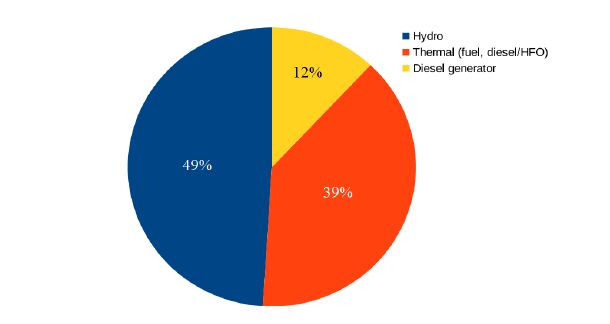
 DownLoad:
DownLoad: 